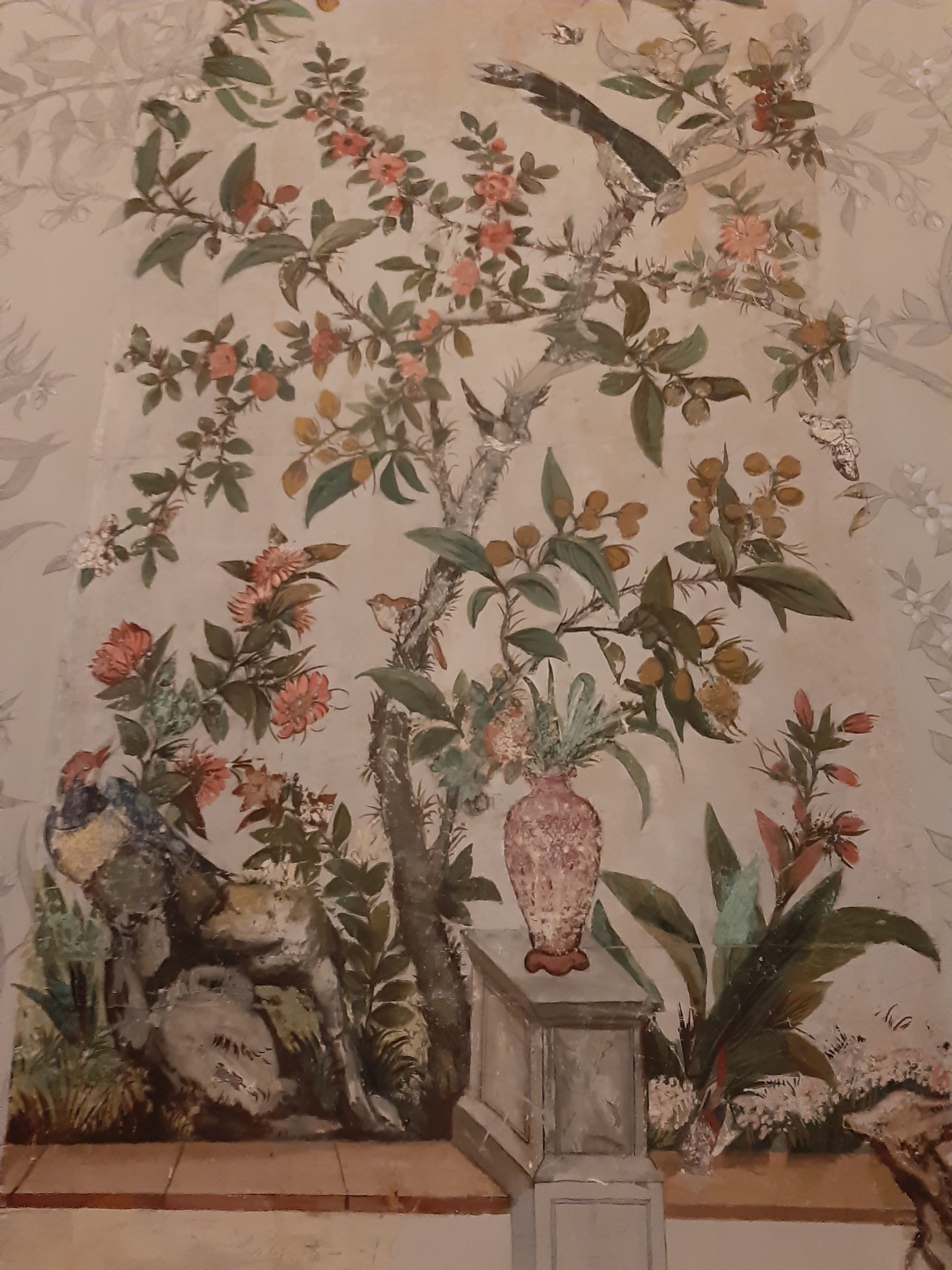The Chinese Withdrawing Room
Recreated to its original 18th century proportions.
On the walls are remnants of hand painted Chinese wallpaper original to the room with monochrome infill carried out by the studio of David Skinner.
This delicate paper was probably ordered as part of the redecorations done to the castle by the 18th Earl, Walter Butler.
During the 19th century ladies withdrew here from the dining room leaving the men to enjoy their port and cigars after dinner, as was the social convention.
Highlights
Chinese Wallpaper
Walter Butler had 3 rooms decorated with Chinese Paper in 1801 of which only fragments of one survive.
The Crowded design includes water fowl, fruit and flower laden trees, ornate balustrades and fences supporting urns of various sizes and forms.
More vases hang from the trees, where pheasants perch and smaller birds fly in pursuit of butterflies and insects.
The paper was supplies with a swagged and tassled border at cornice level, also of Chinese origin.
Unfortunately, irreversible overpainting in oil colours were carried out in the 1920s.
Walter Butler belonged to the circle of the Prince Regent and the paper in Kilkenny is similar to that chosen by the future king for the saloon at the Royal Pavilion, Brighton, and to another set which the regent presented to the owners of Temple Newsam, Leeds.
The Ormondes have been admirers of oriental exoticism since the beginning of the 18th Century when their English house in Old Richmond Park boasted yellow chinoiseries interiors.
Ushak rug
This is a late 19th century Ushak rug.
Ushak Carpets are handwoven in the city of Uşak in Turkey.
Uşak was a major centre of rug production from the early days of the Ottoman Empire.
There was a renewed appreciation for Persian rugs in the 19th century and the Ushak rugs became highly fashionable.
Ushak rugs are generally woven in a method known as the Ghiordes knot or the Turkish knot: where coloured weft yarn passes over the two warp yarns and is then pulled through between them and then cut to form the pile.



